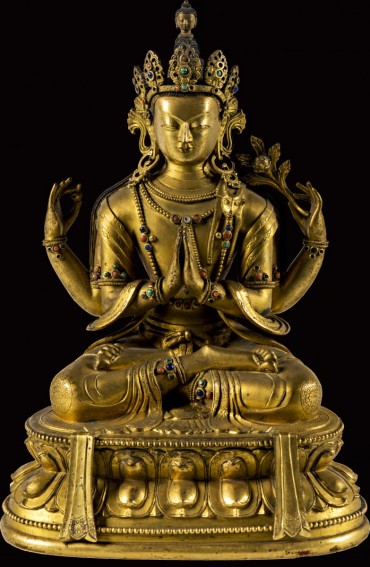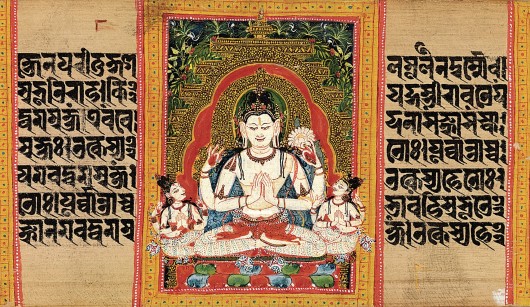China or Tibet, 18th–19th century; gilded metal with inlays; 10 1/4 x 7 1/4 in.; Jacques Marchais Museum of Tibetan Art, 85.04.0682.
Shadakshari Lokeshvara
Folio from a Manuscript of the Ashtasahasrika Prajnaparamita (Perfection of Wisdom), India, West Bengal or Bangladesh, Pala period, early 12th century; opaque watercolor on palm leaf; page: 2 3/4 x 16 7/16 in., image: 2 1/2 x 1 15/16 in; The Metropolitan Museum of Art, Purchase, Lila Acheson Wallace Gift, 2001, 2001.445a, photo: www.metmuseum.org.
This 12th-century manuscript illumination shows how the later Tibetan sculpture closely follows medieval Indian Buddhist iconography. In pose, attributes, gestures, and ornaments, the four-armed Avalokiteshvara appears remarkably consistent from one religious and regional context to another. Shadakshari Lokeshvara’s enduring role in ritual and meditative practice may in part explain this continuity.





